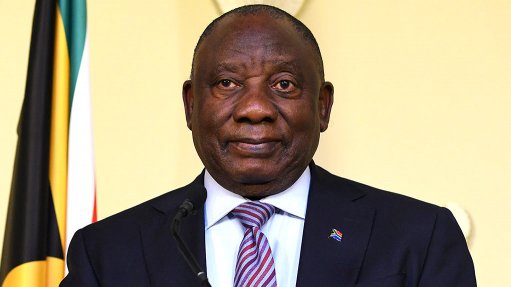SA enters data economy as voice dwindles
South Africa is entering a data economy and has started adopting a culture of messaging, as voice increasingly declines as a means of communication.
“The data economy is arriving in quite a big way,” said World Wide Worx MD Arthur Goldstuck, explaining that at a time when mobile networks were seeing voice revenues decline for the first time in their histories, younger users were “leading the consumer charge” into a new data economy.
Speaking at the release of World Wide Worx’s 2014 Mobility report, in Illovo, on Tuesday, he said the market was showing a “dramatic shift” as the data spend of the overall mobile phone market increased at the expense of voice spend.
“The rapidly growing penetration of smartphones and the increased ease of use of the Internet on feature phones has changed the way South Africa communicates,” Goldstruck said.
Voice spend declined from comprising an average 77% and 73% of a budget, in 2010 and 2012 respectively, to 65%, in 2013, while data increased from 8%, in 2010, and 12%, in 2012, to 16% by 2013.
“Older users continue to spend far more overall, but the powerful shift in spend from voice to data will work its way up the age segments in the coming years,” Goldstuck noted, adding that a flattening out of the curve of data use was already being seen from the 25 to 34 age group through to the 46 to 55 age group.
The Mobility 2014 research study, undertaken with the backing of First National Bank (FNB), revealed it was mostly students and entrants into the workforce within the 19 to 24 age bracket that were “abandoning” voice faster than any other segment, with only 56% of this group’s mobile budget now spent on voice, down from 66% in mid-2012.
Data spend for the younger group had increased from 17% to 24%, showing that young people were the real “data hogs”.
“These findings are clear evidence that consumers are taking control of their own conversations – choosing when, where and how they want to communicate,” said FNB head of cellphone banking and messaging Dione Sankar.
SMS and MMS spend remained steady at 13%, benefitting from a shift to a messaging culture.
“While SMS remains pervasive, new communication channels are being opened up to the mass market through both social media and instant messaging (IM) apps,” Goldstuck added.
For South African adult cellphone users, apps had become one of the most significant tools driving the data economy, with the use of apps by adult cellphone users up from 24% in mid-2012 to 43% in late 2013.
Goldstuck commented that the “tipping point” in mobile apps use was reached in 2013, as more than half of urban cellphone users were now using these tools.
“The rural market is also growing fast, with its 27% usage level surpassing the overall market of 18 months before,” he said.
IM had recorded the greatest growth in mobile apps, with WhatsApp more than doubling its penetration in the past 18 months, from 26% to 53% and a further 10% of cellphone users saying they would use it in the coming year.
“Facebook Chat is the second-most-popular chat tool, with 45% of respondents using it, followed by Mxit, remaining steady at 25%, and BBM rising from 17% to 21%.”
Twitter, which was being used by 20% of the adult cellphone users surveyed, was also targeted to undergo significant growth in the next year, with an increase in adult users expected to reach 30%.
“One in ten banking customers are now using apps,” Sankar added, pointing out that the use of banking apps had reported the biggest proportional shift in cellphone banking.
“From only 1% of all banking customers using banking apps in mid-2012, this figure has shot up to 9% in late 2013. Cellphone banking has also surged from 28% in mid-2012 to 37% in late 2013,” he said.
The Mobility 2014 project comprised two reports, namely The Mobile Consumer in SA 2014, covering cellphone use and mobile banking trends, and The Mobile Internet in SA 2014, which explored online trends.
The research was conducted through face-to-face interviews with 1 200 South African adult cellphone users living in cities and towns.
Comments
Press Office
Announcements
What's On
Subscribe to improve your user experience...
Option 1 (equivalent of R125 a month):
Receive a weekly copy of Creamer Media's Engineering News & Mining Weekly magazine
(print copy for those in South Africa and e-magazine for those outside of South Africa)
Receive daily email newsletters
Access to full search results
Access archive of magazine back copies
Access to Projects in Progress
Access to ONE Research Report of your choice in PDF format
Option 2 (equivalent of R375 a month):
All benefits from Option 1
PLUS
Access to Creamer Media's Research Channel Africa for ALL Research Reports, in PDF format, on various industrial and mining sectors
including Electricity; Water; Energy Transition; Hydrogen; Roads, Rail and Ports; Coal; Gold; Platinum; Battery Metals; etc.
Already a subscriber?
Forgotten your password?
Receive weekly copy of Creamer Media's Engineering News & Mining Weekly magazine (print copy for those in South Africa and e-magazine for those outside of South Africa)
➕
Recieve daily email newsletters
➕
Access to full search results
➕
Access archive of magazine back copies
➕
Access to Projects in Progress
➕
Access to ONE Research Report of your choice in PDF format
RESEARCH CHANNEL AFRICA
R4500 (equivalent of R375 a month)
SUBSCRIBEAll benefits from Option 1
➕
Access to Creamer Media's Research Channel Africa for ALL Research Reports on various industrial and mining sectors, in PDF format, including on:
Electricity
➕
Water
➕
Energy Transition
➕
Hydrogen
➕
Roads, Rail and Ports
➕
Coal
➕
Gold
➕
Platinum
➕
Battery Metals
➕
etc.
Receive all benefits from Option 1 or Option 2 delivered to numerous people at your company
➕
Multiple User names and Passwords for simultaneous log-ins
➕
Intranet integration access to all in your organisation





















